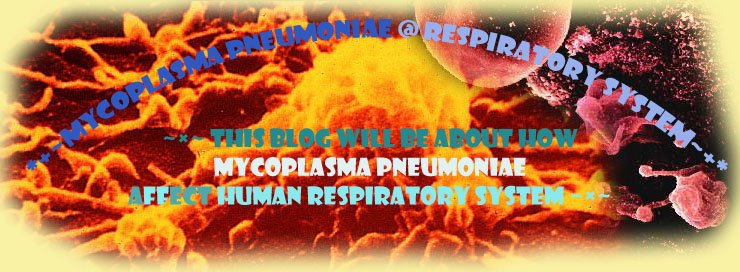skip to main |
skip to sidebar
Pathogenesis caused by Mycoplasma pneumoniae


- Mycoplasma pneumoniae contains an adhesive protein that attaches itself to specific receptors that are located at the bases of cilia on the epithelial cells lining of the human respiratory tracts.
- The bacterium will extract nutrient from the mucosa of host organism to allow them grow and reproduce quickly.
- Mycoplasma pneumoniae undergoes asexual reproduction by binary fission. A single cell will grow until a maximum size and then start to undergo cell division which separate the original cell into two. The two cells then grow and reproduce again to produce a bacterium colony.
- The attachment of the bacteria causes the cilia of human respiratory tract to stop beating.
- Besides that, the bacteria colonization also kills the epithelial cells of the respiratory tract.
- This allows other bacteria to colonize the respiratory tract and causes mucus to accumulate and irritates the respiratory tract.
- There are a few early symptoms of Mycoplasma pneumoniae infections – fever, sore throat, and headache.
- The affected person will also have unproductive cough in attempt to clear the lungs.
- Affected person may get the infection for several weeks but it is usually not severe enough to cause death.
- Mycoplasma pneumoniae affects human respiratory tract through respiratory droplet transmission . Respiratory droplet transmission is transferred when an infected person sneezes or coughs to the air. They produce moist and warm droplets that may enter to other people body through the nose, mouth and eye surfaces.
- The infection caused by this bacterium is called atypical pnemonia which describe a form a of pneumonia not caused by one of the more traditional pathogens . This bacterium infection is lack of sputum production and wealth of extra-pulmonary symptoms.




